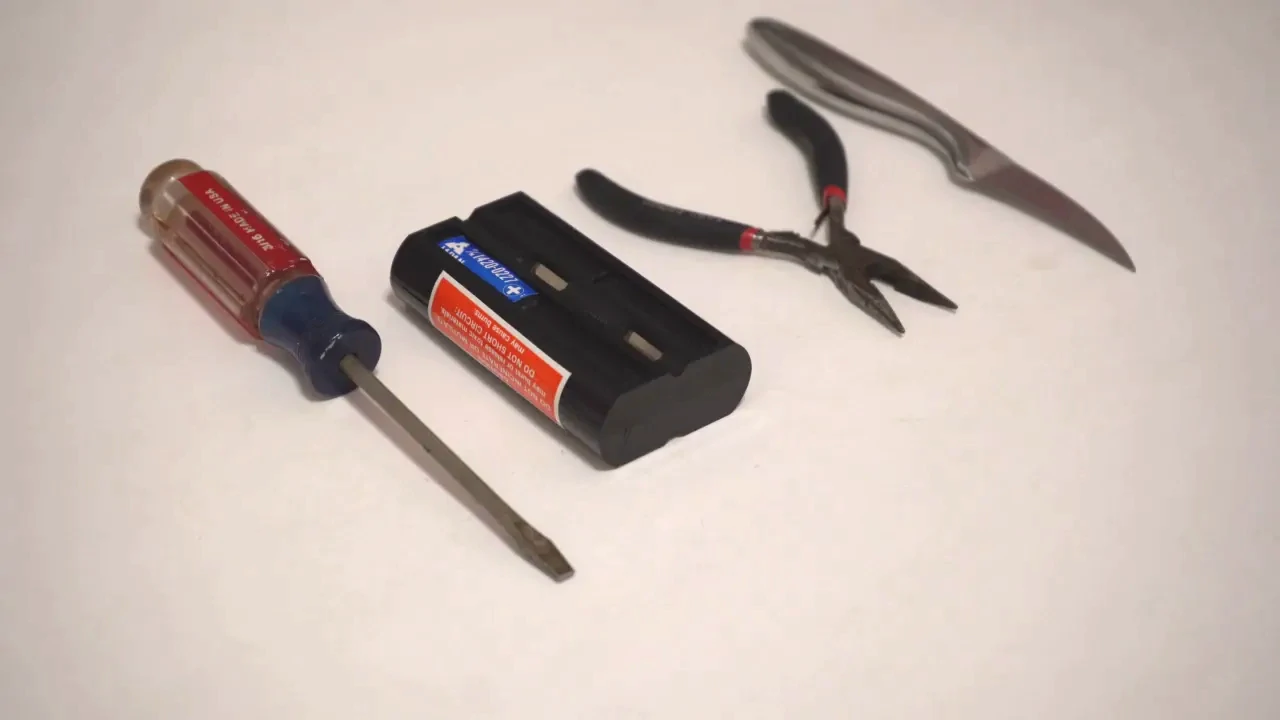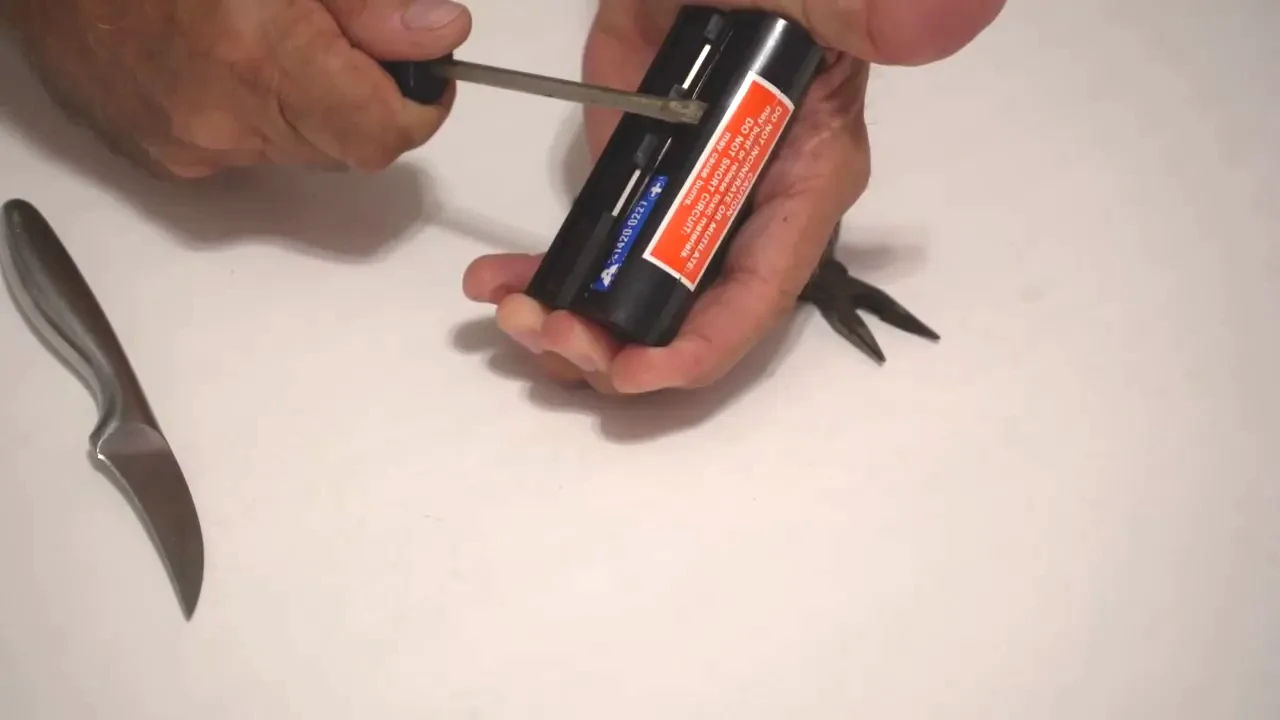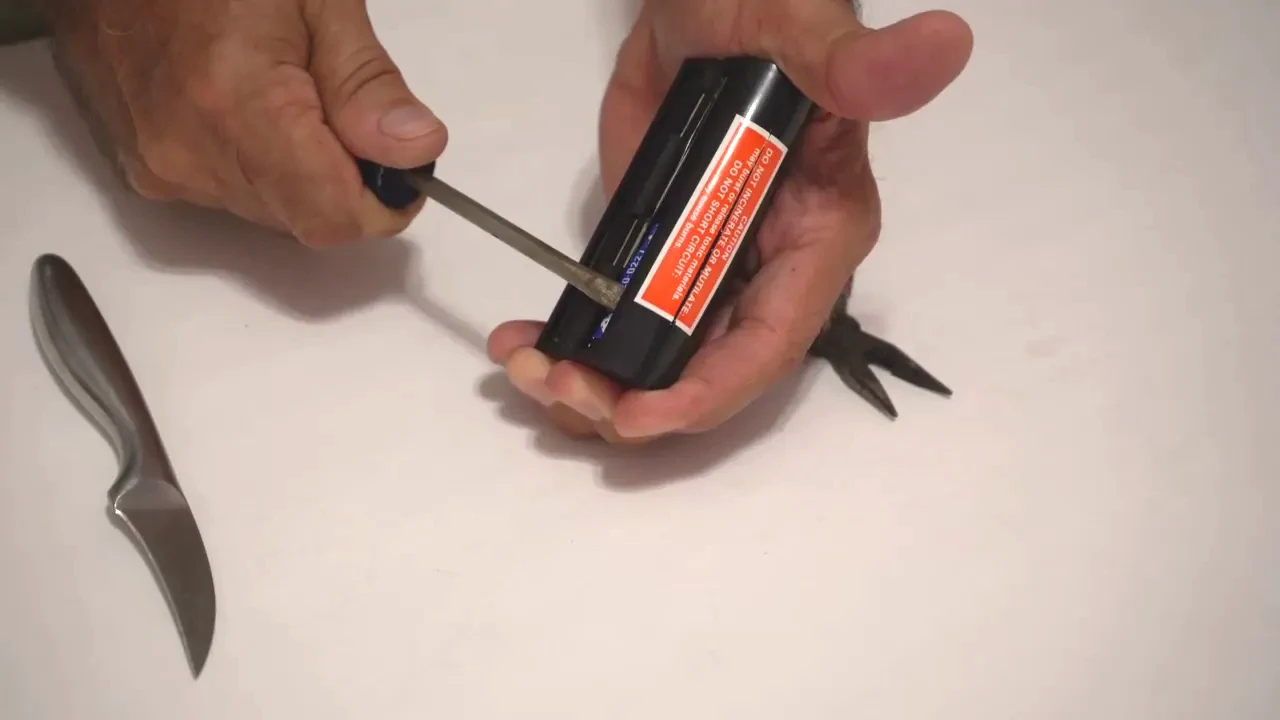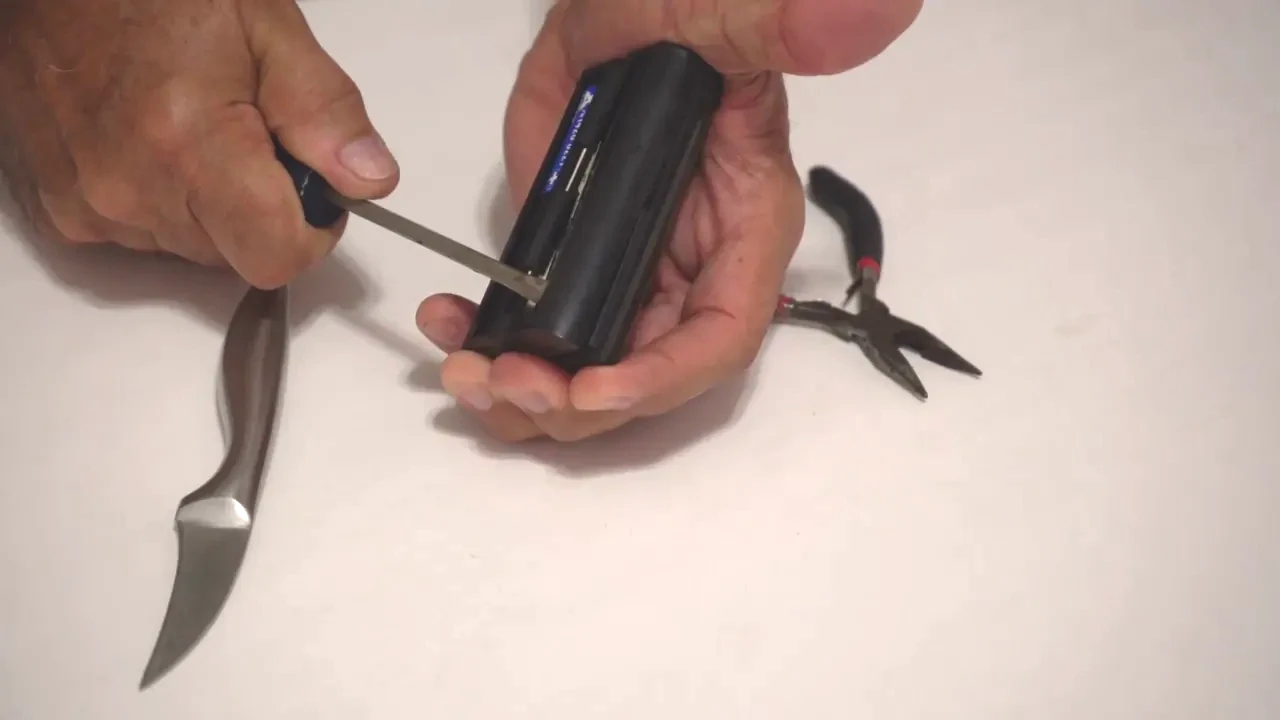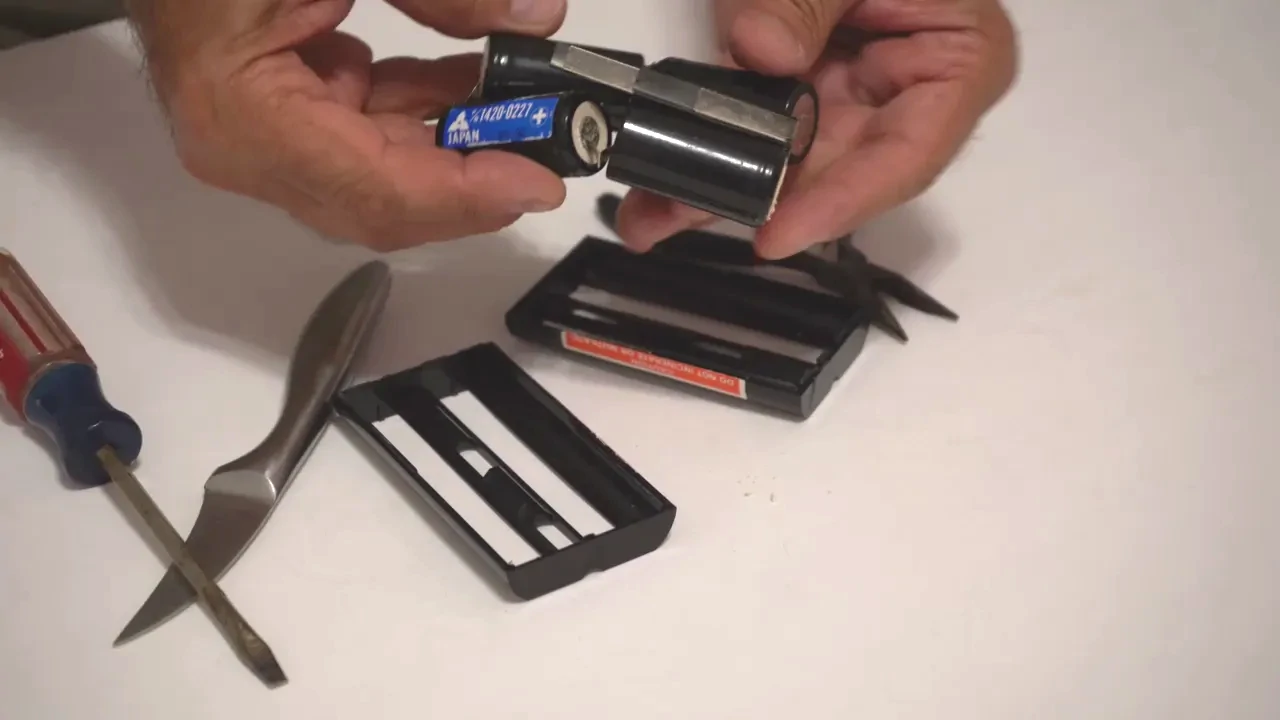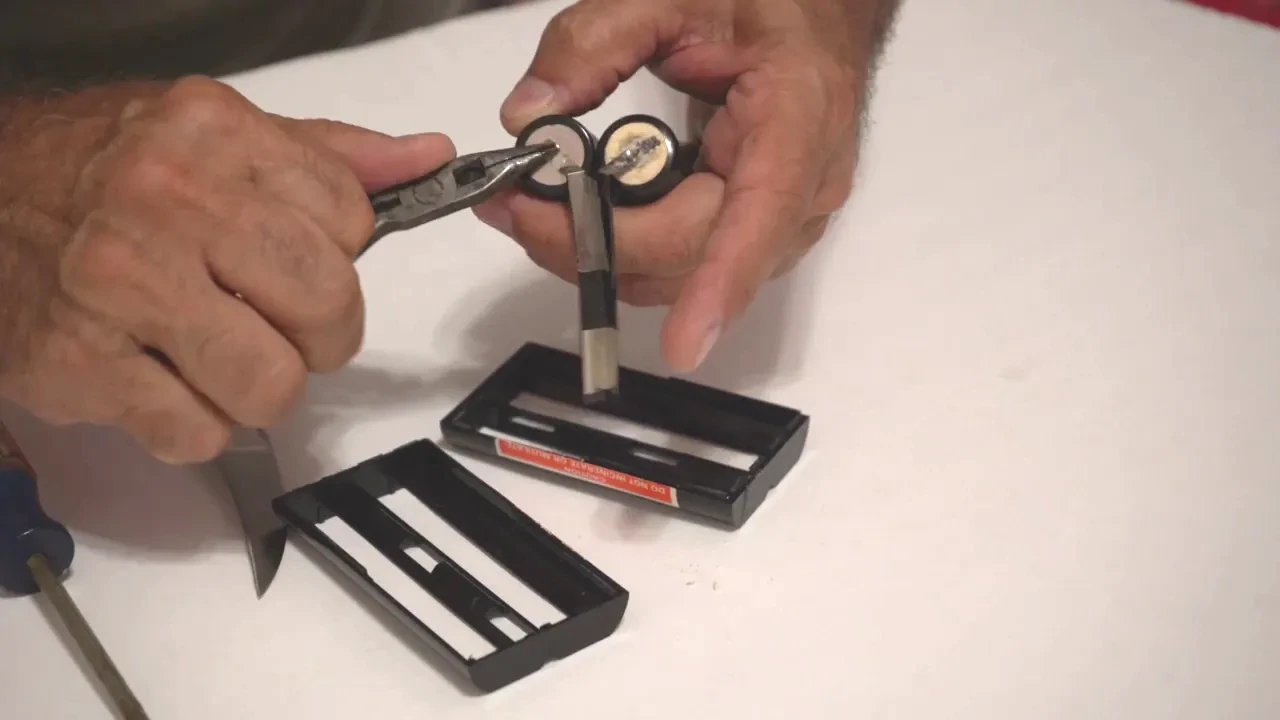The TopCat battery is fits the HP-91, 92, 97 and 97s series of calculators and a number of peripherals (printers 82143,m 82162, tape reader 82161) and is not designed to be refurbished, it is glued shut. Nevertheless since there are no new batteries to be bought, if you want a battery, you need to refurbish an existing one.
The first step is of course cracking the case open without actually damaging the case. This is possible in most instances, but I did see batteries that are so well glued together that they would rather crack than open. Not many, fortunately.
But first, let’s assume that it can be opened; how? The procedure below is an example.
The battery I am using had its NiCd cells in and they are corroded. The white powder is supposed to be potassium carbonate and therefore not poisonous, nevertheless I advise not to mess with it and leave it undisturbed if possible.
Remember that NiCd batteries are considered hazard and have to be disposed of properly or recycled where facilities exists. Do NOT throw them in the garbage.
The knife will be used first to cut all labels that cover the battery along the seams. The screwdriver will then be used to crack the battery shell, we may also use the knife but in this case it was not necessary. The pliers will be used to remove and save the metallic contacts from the old battery.
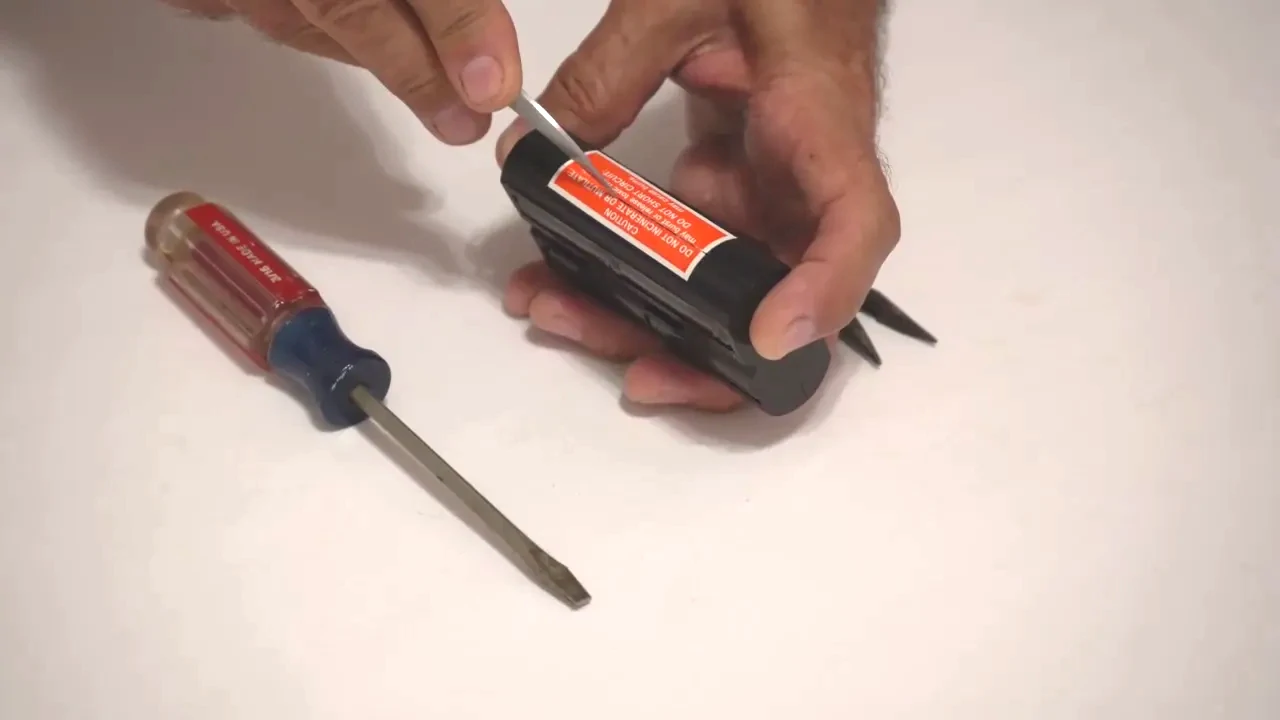
Step 1: Cut the label that sits on the side of the battery. There may be more than one label to cut, in thi scase we only had one.
Step 2: Start forcing the battery apart above the contacts as shown. That is the weakest place for the battery and it is usually possible to force the two parts a fraction of a millimeter apart. Very careful here, we do not want to crack the plastic shell. Do it on one side, starting in the middle, then going towards the sides. Then do it on the other side.
If you are lucky, one of the four corners will come unglued at this point. This happens most of the times, but if it does not happen, work on the corners little by little until one does come apart. In this case one of the corners did crack and from there on all I needed to do was take apart the battery manually.
If the battery is better glued, you may need to follow the separation little by little along the seam, perhaps use the knife in the same manner that it was used for the Woodstock battery. Beware though that the plastic shell for a TopCat battery is less elastic and cracks easier than a Woodstock battery.

Once you have separated the battery halves it is time to retrieve and save the metallic contacts to be used in refurbishing. I use the pliers for this, careful not to bend the contact if possible.
Sometime the + and – contacts come apart (like in this case), sometimes they can be removed together; from the factory they are glued together with a layer of insulation (carton) between. They can be used as is most of the times, but if not, the insulator layer can easily be replaced.
Remember the white powder I mentioned? You can see it here. Leave it alone as much as possible.
Because some of the batteries were not corroded, I decided to salvage some of the tabs that were attached to the batteries, to reuse them for the new ones. My batteries did not come with tabs and the material used by HP in the original battery pack is excellent, it solders easily, it is relatively soft and a good conductor but it also has a good endurance.

And this is it! We have now a disassembled battery, ready to receive new cells, here it is below, together with all metallic contacts we salvaged.
Remember to recycle the old cells!


